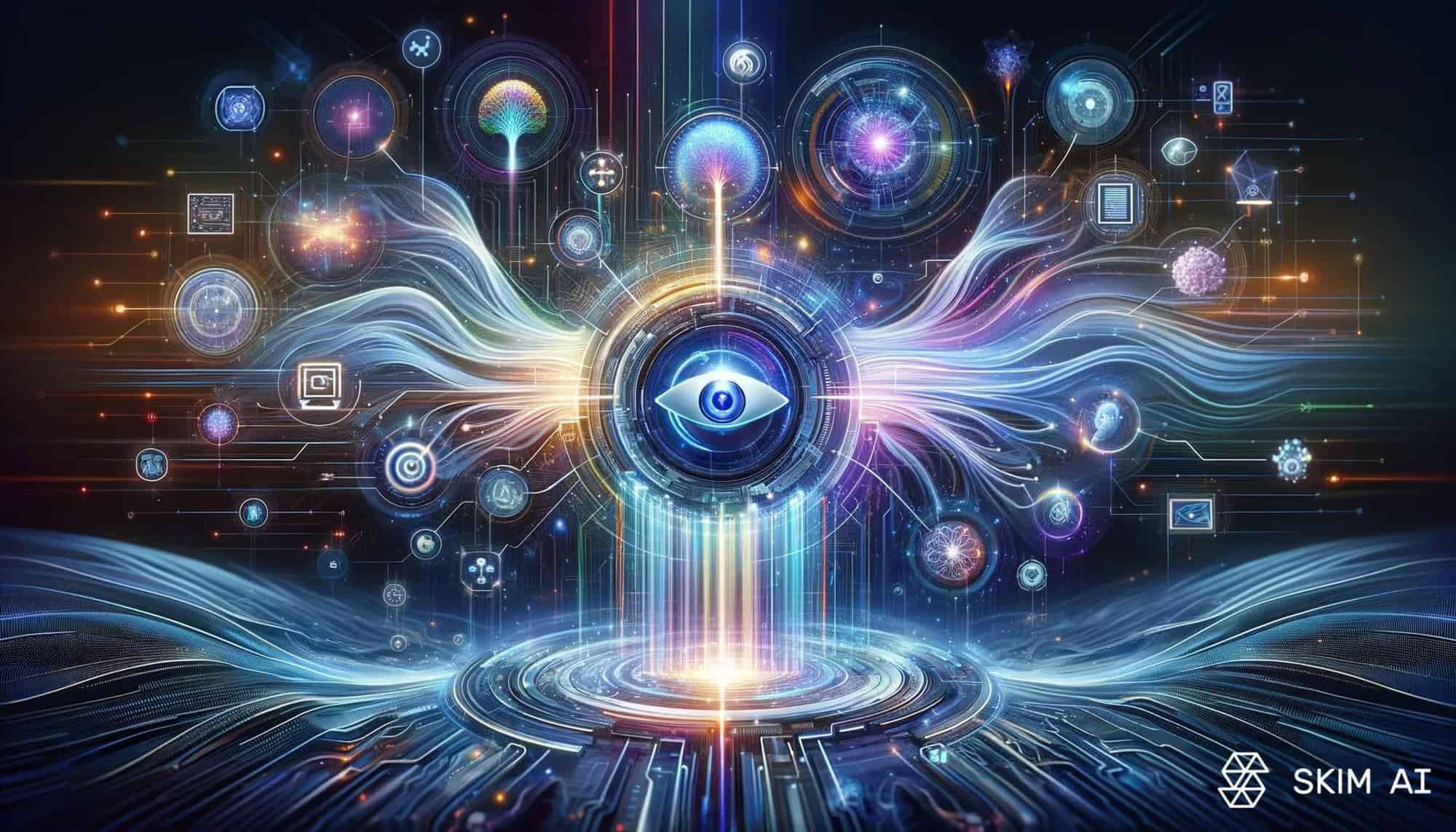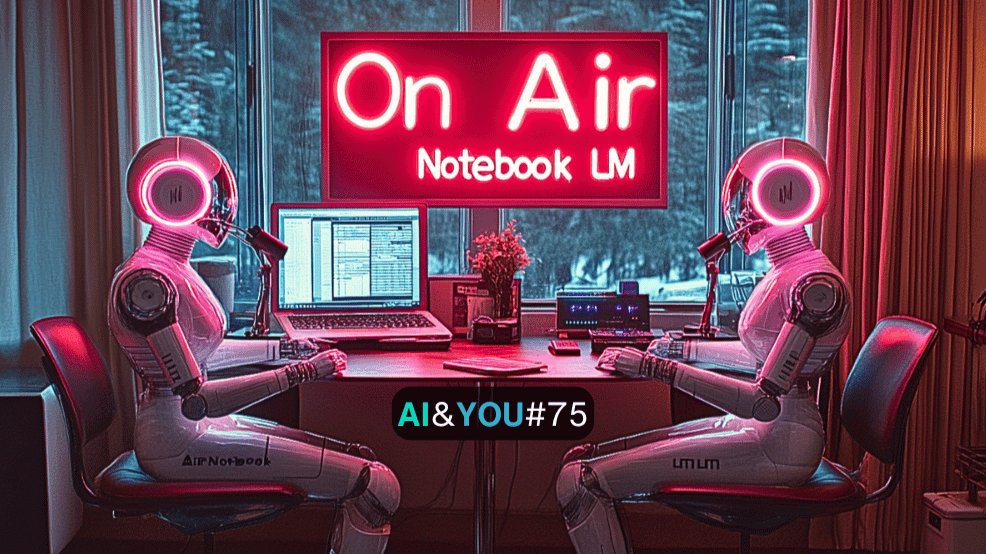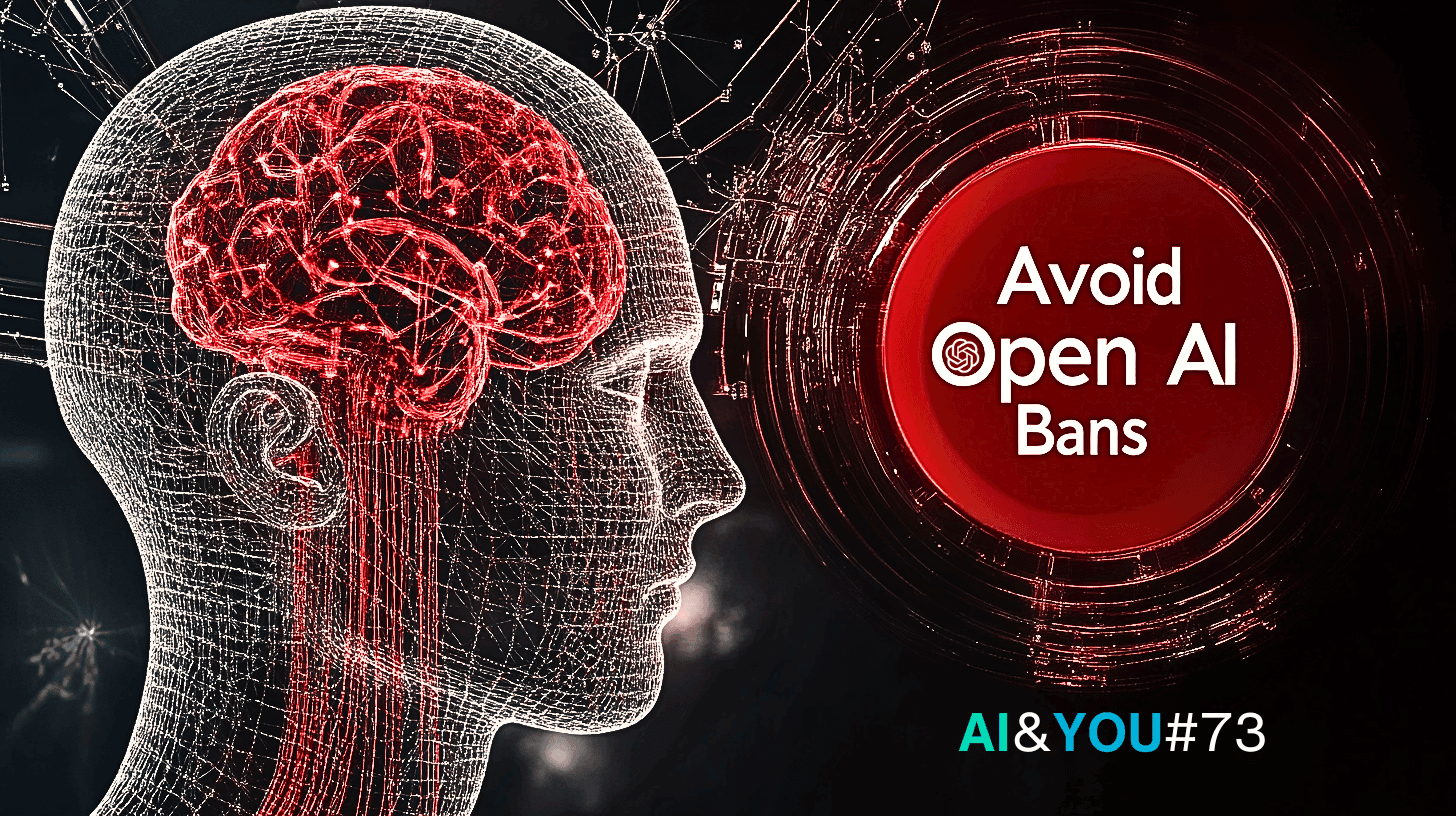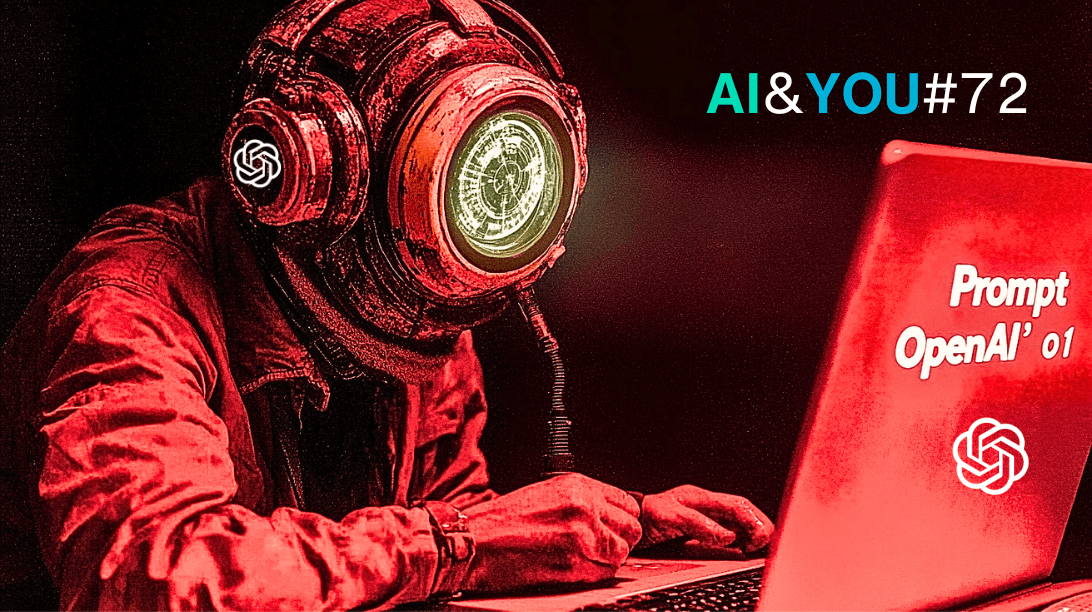AI&YOU #31: The Importance of Multimodal AI + Tools and Platforms to Consider
Stat of the Week: One-third of organizations have incorporated Generative AI into at least one business function. (McKinsey)
In this week’s edition, we summarize and highlight insights from 3 articles we published this week on our blog as we discuss the importance of multimodal AI.
The Importance of Multimodal AI
5 Ways Your Enterprise Can Use ChatGPT Vision
Top 5 Multimodal AI Tools and Platforms
Do you wonder how to increase your company’s scale and productivity with AI? Do you need fractional AI help to assist your current team, or are you not even sure where to start but know it’s important? We are here to help. Schedule an intro call today!
- AI&YOU#30: The Importance of Multimodal AI + Tools and Platforms to Consider
- Contrasting with Unimodal AI Systems
- The Limitations of Unimodal AI Systems
- How We Arrived at Multimodal Learning and AI Models
- Real-World Impact of Multimodal AI
- 5 Ways Your Enterprise Can Use ChatGPT Vision
- Top 5 Multimodal AI Tools and Platforms
AI&YOU#30: The Importance of Multimodal AI + Tools and Platforms to Consider
Artificial intelligence has significantly evolved from its inception, transitioning from simple, rule-based algorithms to more complex systems that closely mimic certain aspects of human intelligence.
A pivotal development in this evolution is the advent of multimodal AI, which stands as a major advancement in the field.
Multimodal AI diverges from traditional AI by its ability to process and interpret multiple types of data inputs – such as text, images, and sounds – simultaneously.
This approach is more reflective of how humans interact with the world, using a combination of sensory inputs.
The core of multimodal AI lies in its ability to process and analyze data from different modalities, including:
Text: Extracting and interpreting information from written language.
Images: Analyzing visual elements from photographs or videos.
Sounds: Understanding audio inputs, ranging from speech to environmental noises.
By combining these modalities, a multimodal AI system gains a more holistic view, enabling it to make more informed and contextually relevant decisions.
Contrasting with Unimodal AI Systems
Traditional AI systems, often referred to as unimodal systems, are limited to processing data from a single modality. For example, a text-based AI can only understand and respond to written language, while an image recognition AI focuses solely on visual data.
Multimodal AI systems, on the other hand, bridge this gap by combining these distinct modalities. This integration not only enhances the system’s comprehension but also allows it to perform tasks that require a multi-sensory understanding, such as identifying objects in a video while understanding the context from accompanying audio or textual descriptions.

The Limitations of Unimodal AI Systems
Unimodal AI systems face significant limitations. While they can be highly effective within their specific domain, their singular focus can lead to gaps in understanding and interpretation. This limitation becomes apparent when these systems encounter scenarios that require a more comprehensive understanding that spans across different types of data.
One of the key challenges with unimodal AI is its inability to mimic the complex sensory processing of humans. Humans use a combination of senses — sight, sound, touch, taste, and smell — to perceive and interact with the world. This multi-sensory approach allows for a richer and more nuanced understanding of our environment.
How We Arrived at Multimodal Learning and AI Models
Multimodal AI has seen significant advancements in recent years, driven by improvements in AI models capable of processing and interpreting multiple types of data.
Key Multimodal AI Technologies:
Natural Language Processing (NLP): NLP has evolved to not only understand written and spoken language but also to interpret the context and nuances when combined with data from multiple sources.
Image and Video Analysis: AI models can now analyze visual media more accurately, understanding the content and context, especially when combined with textual descriptions.
Speech Recognition and Processing: Enhanced speech recognition enables AI systems to understand spoken language more accurately, including tone and emotional context.

Real-World Impact of Multimodal AI
The integration of multimodal AI is revolutionizing multiple industries by offering more sophisticated and context-aware solutions.
Healthcare: Enhances diagnostic accuracy and patient care through data integration and analysis of verbal/non-verbal cues.
Retail and Customer Service: Offers personalized experiences by analyzing customer queries, including voice and facial expressions, and combining textual, browsing, and visual data for product recommendations.
Education: Creates adaptive and interactive learning materials tailored to individual styles and analyzes student engagement to enhance education.
Security and Surveillance: Improves monitoring capabilities by analyzing video, audio, and sensor data for accurate threat detection and comprehensive incident analysis.
These are just a few of the many industries impacted by multimodal AI.

Read our blog: “What is Multimodal AI + Use cases for Multimodal AI“
5 Ways Your Enterprise Can Use ChatGPT Vision
When OpenAI released ChatGPT Vision, it stood out as a groundbreaking development, transforming the capabilities of ChatGPT into a multimodal AI system. This innovative feature extends the prowess of ChatGPT beyond text-based interactions, enabling it to interpret and analyze images, thus opening a new realm of possibilities for enterprises.
Here are 5 ways your enterprise can use ChatGPT Vision:
Enhanced Customer Support and Troubleshooting: Transforms customer service with image-based problem identification and streamlined troubleshooting, leading to quicker resolution, reduced miscommunication, and improved customer experiences.
Advanced UI/UX Feedback for Product Design: Revolutionizes design feedback by analyzing visuals to enhance UI/UX, aiding in rapid design iteration and improving market responsiveness.
Streamlined Documentation and Tutorial Assistance: Simplifies access to documentation and enhances tutorials through intuitive visual interactions, making user support more effective and user-friendly.
Personalized Feature Onboarding and User Training: Offers tailored onboarding and training experiences by analyzing user interactions with new features, enhancing learning efficiency and user engagement.
Competitive Analysis and Market Insights: Provides in-depth competitor product analysis and market insight through visual data, informing strategic decisions and keeping businesses ahead in the market.

Read our blog: “5 Ways Your Enterprise Can Use ChatGPT Vision“
Top 5 Multimodal AI Tools and Platforms
This week, we also looked at 5 of the best multimodal AI tools and platforms, with a special focus on some big names like Runway Gen-2 and ChatGPT.
1. Runway Gen-2
2. ImageBind by Meta
3. ChatGPT
4. Inworld AI
5. Objective (Formerly Kailua Labs)
In this newsletter, let’s take a closer look at the #1 on our list: Runway Gen-2.

Runway Gen-2 marks a significant evolution in the realm of generative AI, particularly in video and image synthesis. This tool demonstrates the power of multimodal AI by allowing users to generate novel videos using a mix of text, images, or video clips.
Runway Gen-2 enables you to craft precise, realistic, and controllable multimedia outputs that push the boundaries of digital creativity.
The latest Gen-2 updates are particularly noteworthy for their major advancements in the fidelity and consistency of the videos they produce. This leap in quality has turned heads in the AI community, with users labeling it as a pivotal moment in the evolution of generative and multimodal AI.
The tool’s ability to generate full-scale videos from simple text prompts, images, or existing videos is a groundbreaking feature, offering new possibilities in storytelling and digital media.
The future of AI is undoubtedly multimodal, and tools like Runway and the others on our list are just the beginning of a journey toward more holistic, interactive, and intelligent systems.
Read our blog: “Top 5 Multimodal AI Tools and Plaforms“
Thank you for taking the time to read AI & YOU!
*Skim AI is an Artificial Intelligence consultancy that has provided AI Advisory & Development Services to enterprises since 2017.
*Chat with me about Enterprise AI
*For even more content on enterprise AI, including infographics, stats, how-to guide, articles and videos, follow Skim AI on LinkedIn
PLEASE LIKE, SUBSCRIBE & SHARE!






